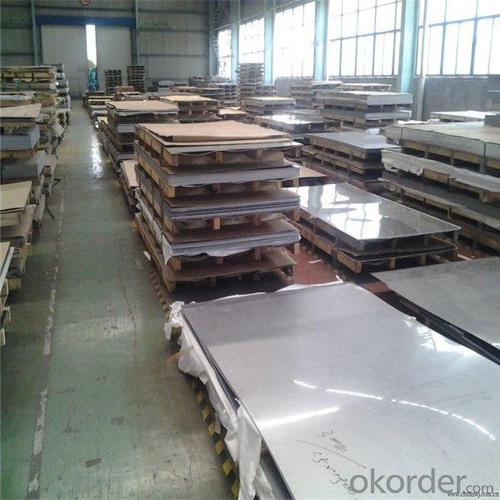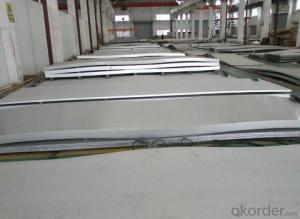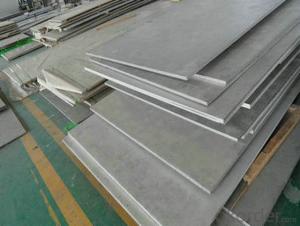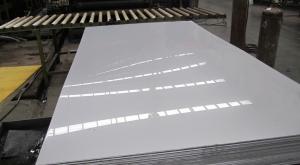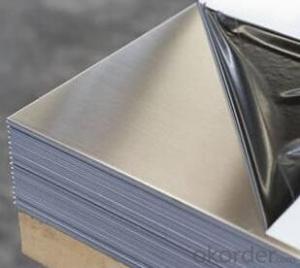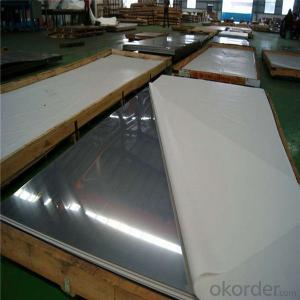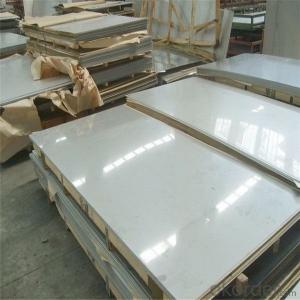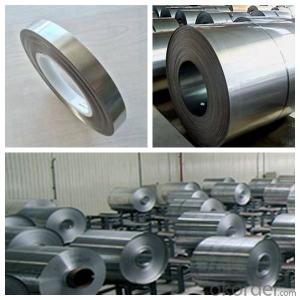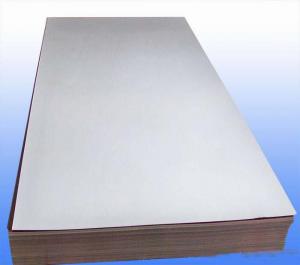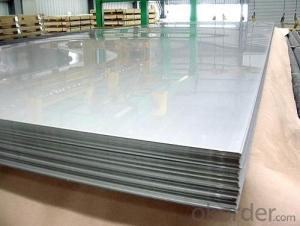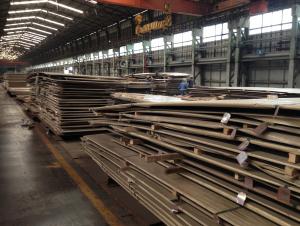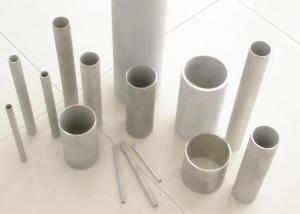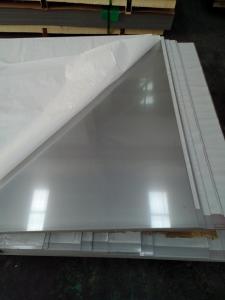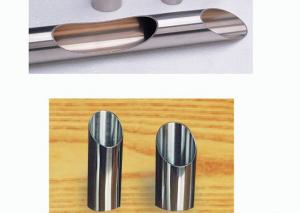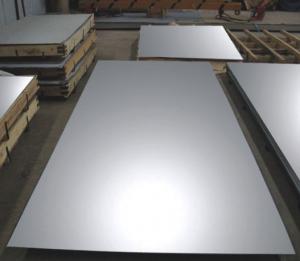310s Stainless Steel Sheet & Plate in China
- Loading Port:
- Shanghai
- Payment Terms:
- TT OR LC
- Min Order Qty:
- 4 m.t.
- Supply Capability:
- 20000 m.t./month
OKorder Service Pledge
OKorder Financial Service
You Might Also Like
Specification
Specifications
310s stainless steel sheet & plate
1 length1000-6000mm
2 width 1000-2500mm
3 thickness:0.3-120mm
310s stainless steel sheet & plate
cold draw hot rolled stainless steel plate
1 length1000-6000mm
2 width 1000-2500mm
3 thickness:0.3-120mm
Product Information
| Product Name | Stainless Steel sheets |
Material | 201/202/301/304/304L/316/316L/410/420 |
Technique | Cold Rolled, Cold Drawn, Hot Rolled |
Standard | ASTM,AISI,GB,DIN |
Thickness | 0.3mm-120mm or as your requirement |
Width | 1000mm-2500mm or as your requirement |
Length | 1000mm-6000mm or as your requirement |
Surface Treatment | No.1,2B,No.4,BA,2B,hairline, No 8 |
Packing | 1. Export sea worthy package + water proof paper + wooden pallet 2. Max Loading 26.5mt for each 20Gp container 3. Safe loading and fixing Professional Teams 4. Professional shipping line |
Delivery | Within 15days after received deposit |
Price Item | T/T,L/C |
Application | Stainless Steel Sheets are widely used in below fields: 1: Construction field, shipping building industry 2: Petroleum and Chemical Industries 3: Food and Mechanical Industries |
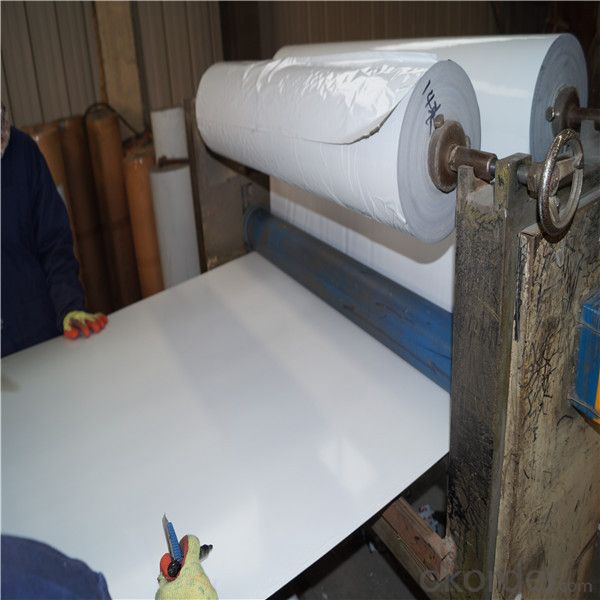
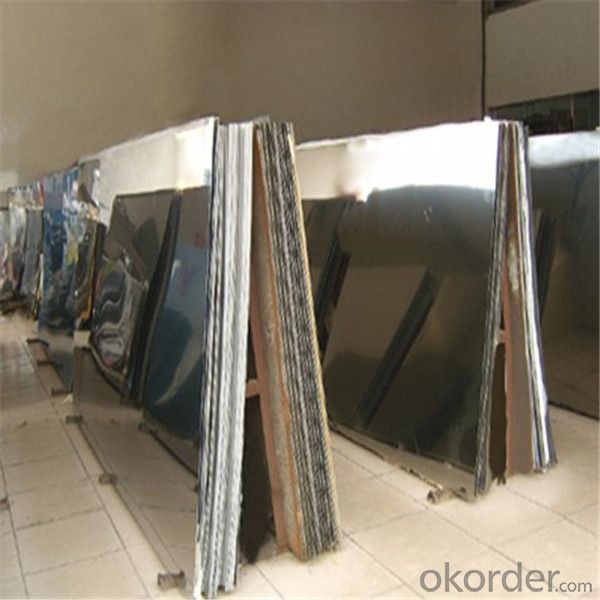
- Q: Are stainless steel sheets magnetic?
- Yes, stainless steel sheets can be magnetic depending on the composition and treatment of the alloy.
- Q: 304 why is stainless steel magnetic?
- 304 stainless steel after cold processing, the structure of the structure will also change to martensite, and the greater the deformation degree of cold work, the more martensite transformation, the greater the magnetism. Like a lot of stainless steel wire, made straight, no obvious induction, but it is bent into a rectangular or circular, and produce some magnetic for cold bending deformation is large, especially the angle of magnetic is more obvious.In order to eliminate the magnetism of the 304 stainless steel, the austenite structure can be recovered by high temperature treatment so as to eliminate magnetism.Special remind is, 304 magnetic stainless steel because it causes, and other materials such as stainless steel, carbon steel, magnetic 430 is not the same level, that is to say the magnetic stainless steel 304 is always weakly magnetic.
- Q: How do I select the appropriate thickness for stainless steel sheets?
- There are several factors to take into account when choosing the right thickness for stainless steel sheets. The first and foremost consideration is the specific purpose or application for which the sheets will be used. For decorative purposes, such as interior design or architectural projects, a thinner gauge may be more suitable. Thinner gauges, typically ranging from 26 to 30 gauge, offer more flexibility and are easier to shape. This makes them perfect for intricate designs or curved surfaces. On the other hand, if you need stainless steel sheets for structural or industrial purposes, a thicker gauge would be better. Thicker gauges, usually ranging from 18 to 20 gauge, provide increased strength and durability. This makes them ideal for heavy-duty applications like construction, automotive, or manufacturing. It is also important to consider the intended use of the sheets. If they will be exposed to harsh environments, heavy loads, or high levels of wear and tear, it is advisable to choose a thicker gauge. This will ensure that the sheets can withstand these conditions without compromising their integrity. Lastly, budget constraints may also influence the choice of thickness. Thicker gauges tend to be more expensive due to the larger amount of material required. Therefore, it is crucial to find a balance between the desired strength and the available budget. In conclusion, when selecting the appropriate thickness for stainless steel sheets, it is important to consider the intended application, the required strength and durability, and any budget limitations. By taking these factors into consideration, you can choose the most suitable thickness that meets your specific needs.
- Q: What is the thickness tolerance for stainless steel sheets?
- The thickness tolerance of stainless steel sheets can differ based on the particular grade and manufacturing method employed. Typically, the accepted thickness tolerance for stainless steel sheets in the industry spans from +/- 0.005 inches to +/- 0.010 inches. Nonetheless, it is essential to acknowledge that various manufacturers and suppliers may establish their own distinct tolerances. Thus, it is consistently recommended to consult the manufacturer's or supplier's specifications for precise information. Furthermore, certain applications or industries may impose stricter thickness tolerances, and it is imperative to comply with the specific requirements set forth by the customer or industry standards in such instances.
- Q: Are stainless steel sheets suitable for roofing?
- Yes, stainless steel sheets are suitable for roofing. They have excellent durability, corrosion resistance, and can withstand extreme weather conditions. Additionally, their sleek appearance adds aesthetic value to any building.
- Q: What's the surface of the 304 stainless steel matte board?
- NO.3 NO.2D and NO.2B coarse grinding material, 100~200# (units) of the abrasives abrasive belt grinding, building materials, kitchen appliances, NO.4 NO.2D and NO.2B intermediate grinding material, polishing surface with abrasive belt grinding 150~180# tobe obtained, this is universal, a mirror reflection of the visible with bright surface. The 'grain'NO.240 NO.2D and NO.2B fine grinding material, grinding of kitchen utensils with 240# Abrasives Abrasive BeltNO.320 NO.2D and NO.2B will be very fine grinding material, grinding of 320# abrasives abrasive belt.NO.400 gloss close to BA, NO.2B material, with 400# polishing wheel for research, general timber, building materials, kitchen utensilsHL abrasive material grinding hairline appropriate particle size of hairline grinding (150~240#) the abrasives of many buildings, building materialsNO.7 is close to mirror finish, and is polished with 600# rotary polishing wheels. It is used for decoration and decorationNO.8 mirror grinding, mirror polishing wheel, grinding, mirror, decoration
- Q: What are the different types of stainless steel sheet finishes?
- There are several different types of stainless steel sheet finishes available, each with its own unique characteristics and appearance. Some of the most common finishes include: 1. No.1 Finish: This is the most basic and widely used finish, also known as "hot rolled annealed and pickled" (HRAP). It has a dull, rough surface with visible grain lines. 2. No.2B Finish: This finish is achieved by cold rolling the stainless steel sheet and then annealing it in a controlled atmosphere. It has a smooth, reflective surface with a slight haze. 3. No.2D Finish: Similar to No.2B, this finish is achieved by cold rolling and annealing. However, it has a slightly rougher surface and is commonly used for applications that do not require a highly reflective finish. 4. No.3 Finish: This finish is achieved by polishing the stainless steel sheet with abrasive belts or brushes. It has a semi-reflective surface with a grainy appearance. 5. No.4 Finish: Also known as "brushed finish," this is achieved by using fine abrasive belts or brushes to create a consistent, linear grain pattern on the surface. It has a matte appearance and is commonly used in architectural and decorative applications. 6. No.6 Finish: This finish is achieved by further polishing the stainless steel with finer abrasives, resulting in a smoother and more reflective surface. 7. No.7 Finish: Similar to No.6, this finish is achieved by using even finer abrasives, resulting in a highly reflective surface with a mirror-like appearance. 8. No.8 Finish: Also known as "mirror finish," this is the highest level of polish achievable on stainless steel. It has a flawless, reflective surface that is often used in decorative and high-end applications. In addition to these standard finishes, there are also specialized finishes available, such as embossed, patterned, or colored finishes, which can further enhance the aesthetic appeal of stainless steel sheets. The choice of finish depends on the specific application and desired appearance, with each finish offering its own unique advantages and characteristics.
- Q: What are the different types of surface finishes for stainless steel sheets?
- Stainless steel sheets come in a variety of surface finishes, each with its own unique characteristics and appearances. Here are some of the most commonly used finishes: 1. The No.1 Finish, also known as hot rolled or annealed finish, is the most basic stainless steel finish. It has a rough, dull appearance with visible grain lines. This finish is typically used for industrial applications where aesthetics are not a priority. 2. The No.2B Finish is achieved by cold rolling the stainless steel sheet and then annealing it in a controlled atmosphere. This results in a bright, smooth finish with a semi-reflective appearance. It is often used for kitchen appliances, decorative trim, and architectural purposes. 3. The No.4 Finish is obtained by brushing the stainless steel sheet with abrasive materials, giving it a uniform, satin-like appearance. It is popular in commercial kitchens, elevator panels, and decorative applications that require a visually appealing and easy-to-clean surface. 4. The No.8 Mirror Finish is the most reflective surface finish available for stainless steel sheets. It involves polishing the surface to a mirror-like shine using progressively finer abrasives. This finish is commonly seen in decorative applications like architectural features, automotive trim, and jewelry. 5. The Hairline Finish is achieved by sanding the stainless steel sheet with fine abrasives in a consistent linear pattern. This creates a textured, brushed appearance and is often used for decorative purposes such as wall cladding, furniture, and signage. 6. The Bead Blasted Finish is achieved by bombarding the stainless steel sheet with small glass beads at high pressure, resulting in a uniform, matte texture. It is commonly used in architectural applications like column covers, elevator doors, and facade panels. These are just a few examples of the different surface finishes available for stainless steel sheets. Each finish offers its own visual effects, textures, and levels of reflectivity. The choice of finish depends on the desired aesthetic, functionality, and requirements of the application.
- Q: Can stainless steel sheets be used for elevator doors?
- Elevator doors can indeed utilize stainless steel sheets. The use of stainless steel for elevator doors is quite prevalent due to its impressive attributes: its robustness, resistance to corrosion, and visually appealing nature. Stainless steel is able to withstand the daily wear and tear associated with elevator usage, remaining unscathed by scratches, dents, and stains. Moreover, stainless steel grants a sleek and contemporary appearance, rendering it a suitable material for elevator doors in various settings like commercial edifices, residential complexes, and hotels. Furthermore, stainless steel sheets can be tailored to fulfill specific design requisites, enabling a wide array of finishes, textures, and patterns to be employed, elevating the overall aesthetic of the elevator doors.
- Q: Are stainless steel sheets suitable for architectural mesh applications?
- Architectural mesh applications greatly benefit from the use of stainless steel sheets. This material is incredibly versatile and durable, offering a multitude of advantages for architectural purposes. With its resistance to corrosion, stainless steel is indispensable for long-lasting performance in outdoor and high-moisture environments. Moreover, its exceptional strength enables it to withstand heavy loads, making it an ideal choice for structural applications. The utilization of stainless steel sheets in architectural mesh brings together functionality and aesthetics in a unique manner. This mesh can be employed in various ways, such as facades, cladding, sunshades, balustrades, and partitions. It can be woven or welded into diverse patterns and shapes, allowing for imaginative and visually appealing designs. Furthermore, stainless steel architectural mesh provides excellent transparency and airflow, making it suitable for applications requiring ventilation or light transmission. It enhances the visual appeal of a building by creating a sense of openness, while simultaneously ensuring privacy and security. Additionally, stainless steel offers a high level of customization. It can be finished in different colors and surface textures, providing architects and designers with the opportunity to achieve their desired aesthetic. Additionally, stainless steel is a sustainable material, as it is fully recyclable and has a long lifespan, minimizing the environmental impact of architectural projects. In summary, stainless steel sheets are an excellent choice for architectural mesh applications due to their corrosion resistance, strength, versatility, and aesthetic appeal. They grant architects and designers a wide range of possibilities to create visually striking and functional structures.
Send your message to us
310s Stainless Steel Sheet & Plate in China
- Loading Port:
- Shanghai
- Payment Terms:
- TT OR LC
- Min Order Qty:
- 4 m.t.
- Supply Capability:
- 20000 m.t./month
OKorder Service Pledge
OKorder Financial Service
Similar products
Hot products
Hot Searches
Related keywords


